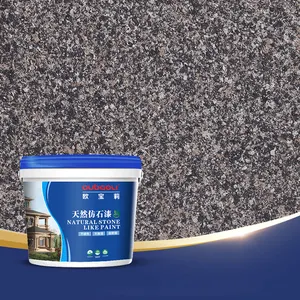
China Manufacturer Eco-Friendly Weather Resistance High Coverage Optional Colors Natural Stone Paint



















Texture art has been around for years, from the eras of the Romans, who used limewash paint textures on their wall to plaster art on canvas. Recently, paint texture has been improved by adding compounds that give it a three-dimensional appearance when applied to surfaces. These paint texture additives help create visual interest, add depth, and cover imperfections on walls and other surfaces. There are various types of textured paints, and they can be applied in different ways to achieve different effects. Peruse the vast catalog of textured wall paint at cheap prices at Alibaba.com.
Whether it's a texture paint on canvas or a textured ceiling you want, the choice of using textured paint depends on your specific preferences, the aesthetic you want to achieve, and the practical considerations of the space you're painting. Textured exterior paint can add depth and aesthetic appeal to your outdoor wall, giving it a unique look. Whether it's a stone texture paint finish or the suede finish alternative, the paint can be especially effective in highlighting such architectural features or creating a rustic, artisanal appearance.
In some cases, textured paint, such as textured black paint, can be more durable compared to flat paint and still camouflage imperfections such as cracks or bumps. It may be easier to clean and can withstand scrubbing without showing marks as much. It makes it one of the best textured paint for interior walls. Despite the many benefits of the texture, Applying textured paint can be more labor-intensive using specialized tools or techniques such as ceiling texture brushes or sponges. In summary, follow the manufacturer's instructions for application and drying times when using textured paint, as the process may differ from traditional flat paints.
Using a base primer is essential whether you are undertaking a textured ceiling paint application or a textured deck coating preparation. The primer can impact the paint adhesion by reducing the risk of flaking or peeling. Moreover, it can improve the overall performance of the finish by serving several purposes, including providing a smooth and uniform surface for the paint and enhancing its durability.
Some primers have stain-blocking properties, which are beneficial when painting over surfaces with existing stains or discolorations. For instance, after removing the painted popcorn ceiling for a facelift, a primer can be used before applying the new textured ceiling paint. You can never go wrong with the primer, whether a textured outdoor paint application or a textured garage floor paint job.